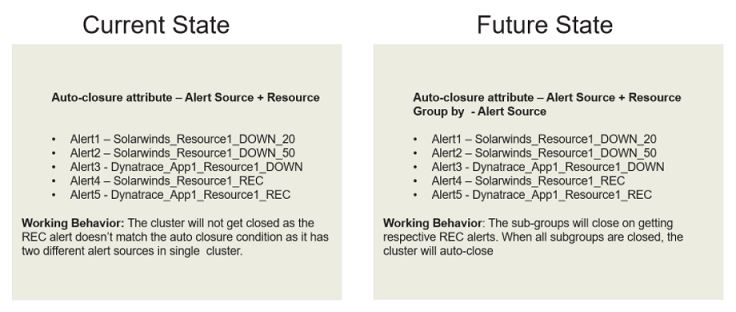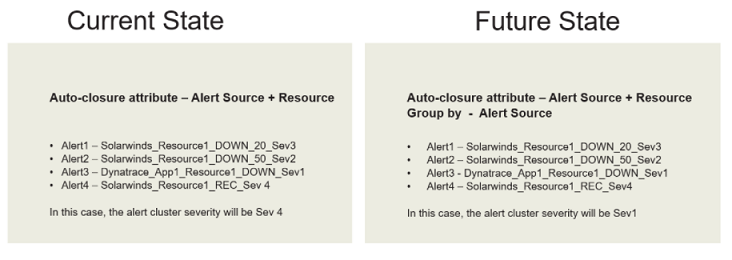|
In AIOps whenever a recovery alert is received, the system checks and compares if the auto-close attributes on the recovery alert matches with all the alerts in the cluster. If it matches, the cluster is automatically closed. Although this method provides assurance that a cluster will never be auto closed incorrectly. It does not provide the flexibility required when alerts from multiple sources are correlated into clusters. It is highly unlikely that alerts from different sources will share the same auto-close alert attributes. To bring in this flexibility required, AIOps introduces an API-first solution ‘Group-by option in auto closure’ in this release.
Admins can set up ‘group-by’ attribute(s) to use for auto-closure. Alerts will be grouped into internal sub-groups within clusters, based on the selected attribute(s). An alert cluster will be auto-closed, only when all sub-groups in the cluster has received a recovery alert.
Here is an example to illustrate the feature.

Going forward, all projects will have ‘group by’ attribute as mandatory. The default setting will be ‘Node name’. Admins can change this using the APIs.
This feature will also change the way alert cluster severity is determined in AIOps. Alert cluster severity is calculated based on the highest severity among the sub-groups. The severity of the subgroup is calculated as the highest alert severity in the subgroup. However, if the latest alert in the subgroup is a recovery alert, the subgroup severity is changed to the same severity as that of the recovery alert.
Here is an example to illustrate the severity calculation.

|